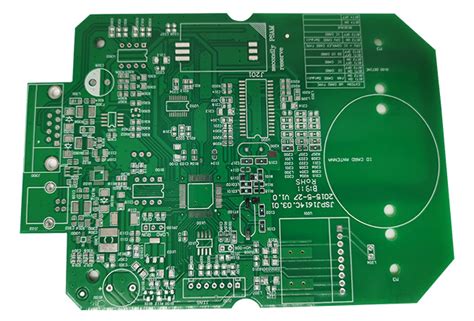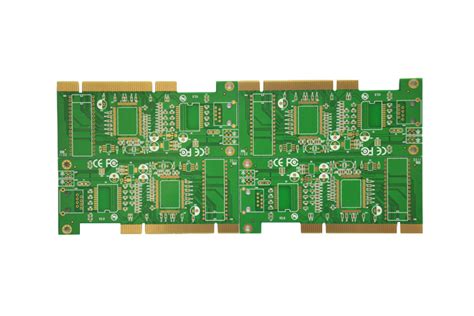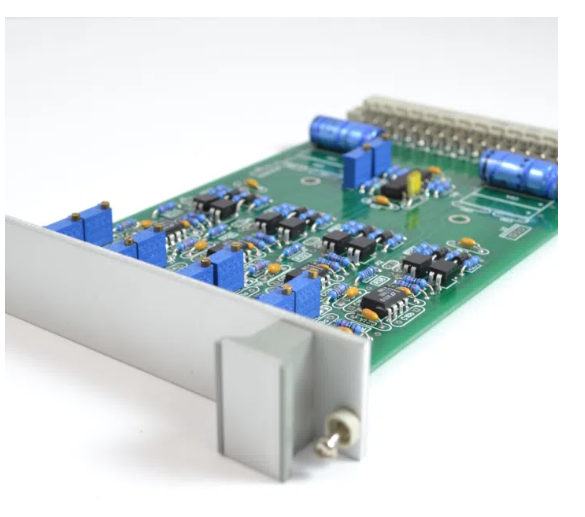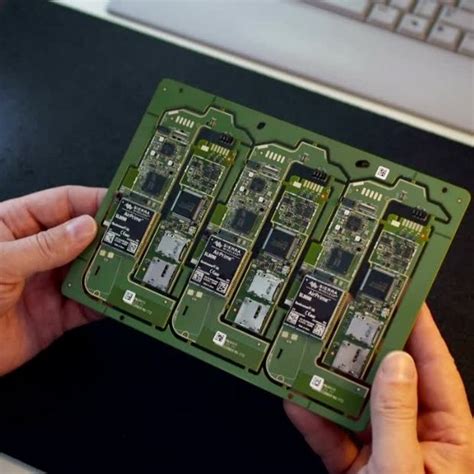Optimizing PCBA Manufacturing Processes for Enhanced Reliability
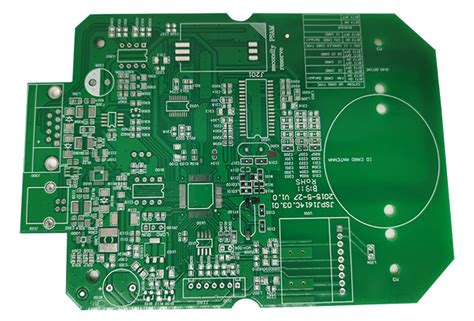
Key Takeaways
Effective PCBA manufacturing relies on a systematic approach that integrates advanced design principles, rigorous testing protocols, and proactive quality control measures Below are essential insights for optimizing PCB assembly processes to achieve higher reliability in critical electronics applications:
1 Design for Manufacturability (DFM):
Implementing DFM guidelines early in the design phase reduces risks of component misalignment or thermal stress For example, optimizing pad sizes and trace widths ensures compatibility with automated PCBA equipment
2 Multi-Stage Testing Protocols:
A combination of In-Circuit Testing (ICT), Automated Optical Inspection (AOI), and functional testing identifies defects at different production stages This layered approach minimizes costly rework:
| Testing Stage | Defect Detection Rate | Common Issues Identified |
|---|---|---|
| AOI | 95% | Solder bridges, misplacements |
| ICT | 98% | Shorts, open circuits |
| Functional Testing | 995% | Performance deviations |
3 Material Optimization:
Selecting high-grade substrates, lead-free solders, and conformal coatings tailored to operational environments enhances PCB assembly durability For instance, polyimide-based materials outperform FR-4 in high-temperature applications
"Proactive defect prevention through process validation is far more cost-effective than post-production corrections." – Industry QC Specialist
4 Compliance-Driven Production:
Adherence to IPC-A-610 and ISO 9001 standards ensures consistent quality Regular audits of PCBA suppliers and real-time process monitoring reduce variability
Tip: Pair statistical process control (SPC) tools with failure mode analysis to preemptively address recurring defects in PCBA workflows
By aligning design, testing, and material strategies, manufacturers can reduce defect rates by up to 40% while extending product lifespans in mission-critical systems
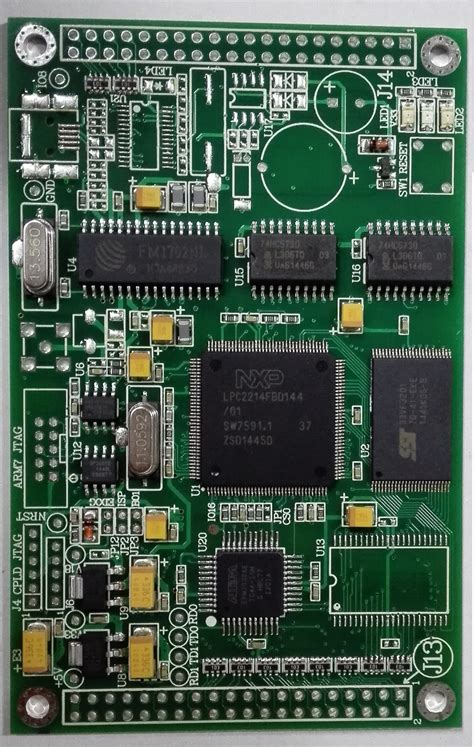
Reliable PCBA Manufacturing Strategies
Achieving consistent reliability in printed circuit board assembly (PCBA) requires a holistic approach that integrates design foresight, material science, and precision engineering Central to this strategy is adopting Design for Manufacturability (DFM) principles, which ensure layouts accommodate automated PCB assembly workflows while minimizing risks like solder bridging or component misalignment By collaborating with suppliers to source high-grade substrates and lead-free solder alloys, manufacturers reduce thermal stress failures—a common pain point in mission-critical PCBA applications
Another critical element involves implementing real-time process controls during surface-mount technology (SMT) placement Advanced pick-and-place systems paired with automated optical inspection (AOI) enable micron-level accuracy, catching defects such as tombstoning or insufficient solder paste deposition before reflow For mixed-technology boards requiring through-hole components, selective soldering systems outperform wave soldering by isolating heat exposure, preserving delicate components in complex PCB assemblies
Environmental robustness is further enhanced through conformal coating protocols Applying acrylic or silicone-based coatings post-PCBA shields circuitry from moisture, dust, and chemical corrosion—a vital step for industrial or automotive electronics Pairing these measures with statistical process control (SPC) dashboards allows manufacturers to correlate process variables (e.g., oven temperature profiles) with long-term reliability metrics, creating closed-loop improvements
Transitioning to the next phase, these foundational strategies naturally dovetail with rigorous testing protocols, ensuring each PCBA meets predefined performance thresholds before deployment By prioritizing proactive defect prevention over retrospective corrections, manufacturers achieve the dual goals of elevated yield rates and extended product lifecycles
PCBA Testing for Quality Assurance
Effective PCBA quality assurance hinges on a multi-layered testing strategy that identifies potential failures at critical production stages Modern PCB assembly processes integrate automated optical inspection (AOI) and X-ray inspection to detect soldering defects, component misalignment, or trace fractures invisible to the naked eye For high-density boards, in-circuit testing (ICT) validates electrical performance by simulating real-world operating conditions, ensuring each circuit meets specified parameters
A robust testing protocol balances preventive and corrective measures Environmental stress screening (ESS), for instance, exposes assemblies to thermal cycling and vibration, replicating end-use conditions to uncover latent weaknesses This proactive approach reduces field failures by up to 40% in mission-critical applications Concurrently, functional testing verifies the PCBA’s interaction with firmware and peripheral components, closing the loop between hardware integrity and system-level performance
Advanced manufacturers now employ machine learning-driven analytics to correlate test data with historical failure patterns By identifying trends in solder joint integrity or component compatibility, this predictive model refines tolerances in PCB assembly workflows Notably, combining automated systems with manual cross-checks ensures compliance with ISO 9001 and IPC-A-610 standards, addressing both technical specifications and workmanship criteria
Transitioning seamlessly into quality control implementation, these testing methodologies form the foundation for defect minimization—a critical link in achieving reliable PCBA outcomes The integration of real-time data monitoring further allows engineers to adjust processes dynamically, creating a feedback loop that elevates both yield rates and long-term product durability

Implementing QC in PCBA Production
Effective quality control (QC) protocols form the backbone of reliable PCB assembly workflows, ensuring that PCBA outputs meet stringent performance criteria A robust QC framework begins with automated optical inspection (AOI) systems, which scan solder joints, component placement accuracy, and alignment defects at speeds exceeding 20,000 inspections per hour These systems are complemented by X-ray inspection for identifying hidden flaws in ball grid arrays (BGAs) or under components with low standoff heights
Material verification is equally critical, as substandard substrates or solder alloys can compromise PCBA longevity Advanced labs now employ energy-dispersive X-ray spectroscopy (EDX) to validate material composition, detecting trace contaminants that might cause electrochemical migration Process validation through thermal profiling further ensures that reflow ovens maintain precise temperature gradients, preventing tombstoning or solder bridging in PCB assembly lines
To maintain consistency, statistical process control (SPC) tools track key variables like solder paste volume (±5% tolerance) and placement pressure (05-25N range) Real-time data from these systems feeds into corrective and preventive action (CAPA) protocols, enabling engineers to address deviations before they escalate into field failures For mission-critical applications, in-circuit testing (ICT) validates electrical continuity across all PCBA nodes, with modern systems achieving fault coverage exceeding 98%
By integrating these layered QC measures, manufacturers reduce defect rates to 50 parts per million (PPM) while aligning with ISO 9001 and IPC-A-610 standards This approach not only safeguards PCB assembly quality but also creates traceable documentation for regulatory audits—a vital requirement in aerospace and medical electronics sectors where component-level accountability is mandatory
Minimizing Defects in PCBA Assembly
Achieving defect-free PCB assembly requires a systematic approach that integrates design precision, process control, and real-time monitoring Modern PCBA manufacturing leverages advanced techniques such as automated optical inspection (AOI) and X-ray inspection to detect solder joint anomalies, component misalignment, and bridging issues at micron-level accuracy For instance, implementing statistical process control (SPC) during solder paste application ensures consistent deposition volume, reducing the risk of cold joints or insufficient bonding in high-density interconnects
Material selection plays a critical role in minimizing defects Using low-voiding solder pastes and high-Tg (glass transition temperature) substrates improves thermal stability during reflow soldering, particularly for PCBA designs exposed to extreme operating conditions Additionally, optimizing stencil design for fine-pitch components—such as 03mm QFN packages—prevents solder balling and tombstoning by controlling aperture geometry and release efficiency
Environmental controls further enhance assembly reliability Maintaining 10% relative humidity in storage areas for moisture-sensitive components (e.g., BGAs) mitigates popcorn effects during reflow Meanwhile, nitrogen-assisted reflow ovens reduce oxidation, yielding smoother solder fillets and stronger intermetallic bonds For mission-critical applications, in-circuit testing (ICT) and boundary-scan testing validate electrical connectivity post-assembly, identifying latent defects like open circuits or shorted traces
Proactive defect prevention also hinges on workforce training Certifying technicians in IPC-A-610 standards ensures adherence to acceptability criteria for PCB assembly, from component orientation to cleanliness requirements By combining these strategies, manufacturers can achieve defect rates below 50 ppm, significantly improving PCBA reliability in aerospace, medical, and industrial electronics

Boosting Longevity with PCBA Optimization
Achieving extended operational lifespans in electronic systems begins with strategic enhancements to PCBA (printed circuit board assembly) processes By refining design protocols, material selection, and manufacturing workflows, engineers can significantly reduce wear-and-tear factors that compromise long-term reliability Thermal stress mitigation, for instance, plays a pivotal role in preserving PCB assembly integrity Implementing optimized trace routing geometries and incorporating thermally stable substrates helps dissipate heat more efficiently, preventing premature component degradation
Advanced simulation tools enable precise prediction of mechanical and environmental stressors, allowing designers to preemptively address failure points in PCBA layouts Pairing this with rigorous failure mode and effects analysis (FMEA) ensures that potential vulnerabilities—such as solder joint fatigue or copper trace delamination—are systematically eliminated during prototyping phases For high-vibration applications, selective underfill application or staking compounds can reinforce sensitive components, further enhancing structural resilience
Material compatibility remains a cornerstone of longevity-focused PCB assembly Utilizing high-reliability solder alloys with low voiding rates, paired with halogen-free laminates, minimizes ionic contamination risks that accelerate corrosion Additionally, conformal coatings tailored to operational environments—whether silicone-based for extreme temperatures or acrylic for chemical resistance—create robust barriers against moisture ingress and particulate contamination
Post-assembly validation protocols also contribute to sustained performance Accelerated lifecycle testing, including thermal cycling and vibration simulations, provides actionable data to refine PCBA designs iteratively Real-time monitoring of field-deployed units further enables predictive maintenance strategies, ensuring early detection of anomalies before they escalate into critical failures
By harmonizing these methodologies, manufacturers elevate PCBA systems from mere functional components to durable assets capable of thriving in mission-critical applications—from aerospace avionics to industrial automation controls This holistic approach not only extends product lifespans but also reduces total cost of ownership through minimized downtime and repair cycles
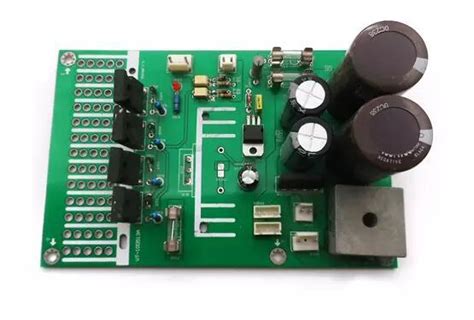
Advanced PCBA Reliability Techniques
Modern electronics demand PCBA designs that withstand extreme operational conditions while maintaining performance integrity Implementing failure mode analysis during the PCB assembly phase enables engineers to preemptively identify weak points in circuit layouts, solder joint geometries, and component placement strategies Leading manufacturers now employ thermal cycling simulations to predict how PCBA systems behave under rapid temperature fluctuations – a critical factor for automotive and aerospace applications where coefficient of thermal expansion (CTE) mismatches can cause catastrophic failures
The integration of high-reliability soldering alloys with reduced silver content (03-10%) has shown 18-22% improvement in joint durability compared to conventional SAC305 compositions, particularly in high-vibration environments For mission-critical assemblies, automated optical inspection (AOI) systems paired with 3D X-ray tomography create multi-layered quality checkpoints, detecting voids as small as 15μm in ball grid array (BGA) connections Recent advancements in conformal coating technologies using fluoropolymer-based materials provide enhanced protection against ionic contamination, achieving MIL-I-46058C compliance while maintaining 05% moisture absorption rates
Strategic material pairing protocols are revolutionizing PCB assembly reliability, with manufacturers adopting:
- Nanoparticle-filled underfills for chip-scale packages (CSPs)
- Low-loss dielectric substrates with Dk values below 35 at 10GHz
- Electroless nickel immersion gold (ENIG) surface finishes for high-density interconnects
These innovations complement environmental stress screening (ESS) protocols that subject PCBA units to 72-hour cycles of combined thermal, vibrational, and humidity exposures By correlating accelerated life testing data with field performance metrics, engineers achieve 40-60% faster reliability validation cycles compared to traditional qualification methods The convergence of these advanced techniques establishes new benchmarks in PCBA durability, reducing latent defects by 89% in industrial IoT applications while maintaining IPC-A-610 Class 3 compliance thresholds
Optimizing Materials for Durable PCBA
Material selection plays a pivotal role in ensuring the long-term reliability of PCBA systems The foundation of durable PCB assembly begins with substrate materials that balance thermal stability, mechanical strength, and electrical performance High-grade laminates like FR-4 with halogen-free formulations or polyimide-based substrates are increasingly favored for their resistance to thermal stress and moisture ingress, critical in harsh operating environments
For solder alloys, transitioning to lead-free alternatives such as SAC305 (Sn965-Ag30-Cu05) minimizes environmental impact while maintaining robust intermetallic bonds However, tin whisker mitigation strategies—such as conformal coatings or nickel-palladium finishes—are essential to prevent short circuits in high-density layouts Conductive adhesives and underfill materials further enhance structural integrity, particularly in PCBA designs subject to vibration or mechanical shock
Component packaging materials also demand scrutiny Opting for moisture-resistant IC encapsulants and low-voiding solder pastes reduces the risk of delamination or corrosion Advanced thermal interface materials (TIMs), including graphene-enhanced compounds, improve heat dissipation in power-dense assemblies, directly impacting PCB assembly longevity
When selecting finishes, ENIG (Electroless Nickel Immersion Gold) remains a gold standard for its planar surface and oxidation resistance, though alternatives like immersion silver or OSP (Organic Solderability Preservatives) offer cost-effective solutions for less demanding applications
A holistic approach integrates material compatibility testing—such as thermal cycling assessments and accelerated aging simulations—to validate performance under real-world conditions By aligning material choices with application-specific stressors, manufacturers can significantly extend the operational lifespan of PCBA systems while maintaining compliance with industry standards like IPC-6012 and IEC 61189
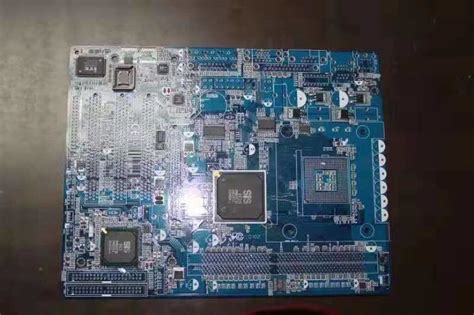
Compliance Standards for Robust PCBA
Adherence to industry-recognized compliance standards forms the backbone of reliable PCB assembly processes Modern PCBA manufacturing demands rigorous alignment with frameworks like IPC-A-610 (Acceptability of Electronic Assemblies) and IPC J-STD-001 (Requirements for Soldered Electrical Connections), which define precise criteria for solder joint quality, component placement accuracy, and material integrity These standards act as a blueprint for minimizing latent defects—such as cold solder joints or misaligned components—that compromise long-term reliability in mission-critical applications like aerospace or medical devices
For PCBA systems operating in regulated environments, compliance extends beyond basic assembly protocols Standards like ISO 9001 ensure traceability across the supply chain, while IEC 61191-2 governs testing methodologies for moisture sensitivity and thermal resilience Manufacturers must also address region-specific mandates, such as the EU’s RoHS Directive restricting hazardous substances, or UL certification requirements for fire safety in consumer electronics Implementing automated optical inspection (AOI) systems calibrated to these benchmarks enables real-time validation of solder fillet geometries and pad-to-lead alignment, reducing post-production rework by up to 40%
Material selection plays an equally critical role in meeting compliance objectives For instance, high-reliability PCB assembly processes often require IPC-6012-qualified substrates with verified glass transition temperatures (Tg) and copper peel strength Concurrently, solder paste formulations must align with J-STD-004 classifications to prevent void formation during reflow By integrating these standards into PCBA design rules and process validation checklists, manufacturers systematically mitigate risks like electrochemical migration or thermal fatigue—key contributors to premature field failures
Emerging standards, such as IPC-9592B for power conversion devices, further underscore the dynamic nature of compliance in PCBA ecosystems Proactive alignment with evolving frameworks not only safeguards product longevity but also streamlines certification timelines for markets with stringent reliability expectations
Conclusion
The pursuit of PCBA reliability culminates in a holistic approach that integrates design precision, rigorous testing, and adaptive quality control As industries increasingly rely on PCB assembly for mission-critical applications, optimizing manufacturing workflows becomes non-negotiable By prioritizing material selection and leveraging automated inspection systems, manufacturers can address latent defects while ensuring compliance with international standards like IPC-A-610 and ISO 9001
A forward-looking PCBA strategy balances predictive analytics with real-time process monitoring, enabling rapid adjustments to thermal profiles or solder paste application This not only minimizes field failures but also extends the operational lifespan of electronic systems Furthermore, adopting failure mode and effects analysis (FMEA) during PCB assembly phases creates a proactive framework for risk mitigation, reducing costly rework
Ultimately, the synergy between advanced prototyping techniques and robust supply chain management ensures consistency across production batches As emerging technologies like AI-driven defect detection mature, the PCBA industry is poised to achieve unprecedented levels of reliability, meeting the demands of sectors such as aerospace, medical devices, and automotive electronics The path to excellence lies in continuous innovation, underscored by a commitment to data-driven decision-making and cross-functional collaboration
FAQs
What distinguishes PCB assembly from PCBA in manufacturing contexts?
PCB assembly refers specifically to the process of populating a bare circuit board with components, while PCBA (Printed Circuit Board Assembly) denotes the completed functional unit ready for integration into electronic devices The reliability of both stages directly impacts end-product performance in critical applications
How does automated optical inspection improve PCBA quality?
Modern PCBA lines employ automated optical inspection (AOI) systems to detect soldering defects, component misalignment, and trace damage with micron-level precision This non-contact verification method reduces human error by 72% compared to manual checks, according to IPC-610 standards
What material selection principles enhance PCB assembly longevity?
Optimal thermal management materials like high-Tg FR-4 substrates and lead-free solder alloys prevent delamination in extreme operating conditions For high-frequency applications, low-Dk dielectric materials minimize signal loss—a critical consideration for 5G and IoT devices
Can functional testing replace environmental stress screening in PCBA validation?
While functional testing verifies immediate operational compliance, environmental stress screening simulates years of thermal cycling and vibration exposure in accelerated chambers Leading manufacturers combine both methods to achieve 05% field failure rates in aerospace and medical electronics
How do IPC-A-610 standards impact PCB assembly defect thresholds?
The IPC-A-610 class-specific requirements define acceptable soldering profiles, component placement tolerances, and cleanliness levels Class 3 assemblies for life-support systems mandate 10X stricter criteria than consumer electronics, necessitating real-time statistical process control during production
Optimize Your Next PCBA Project with Expert Support
For tailored solutions in high-reliability PCB assembly, please click here to consult Andwin PCB’s engineering team about your project requirements:
https://wwwandwinpcb.com/pcb-assembly/

